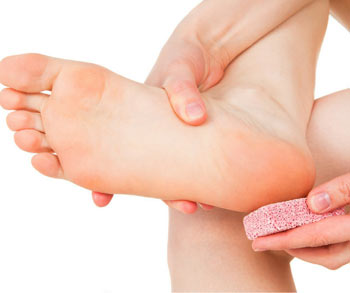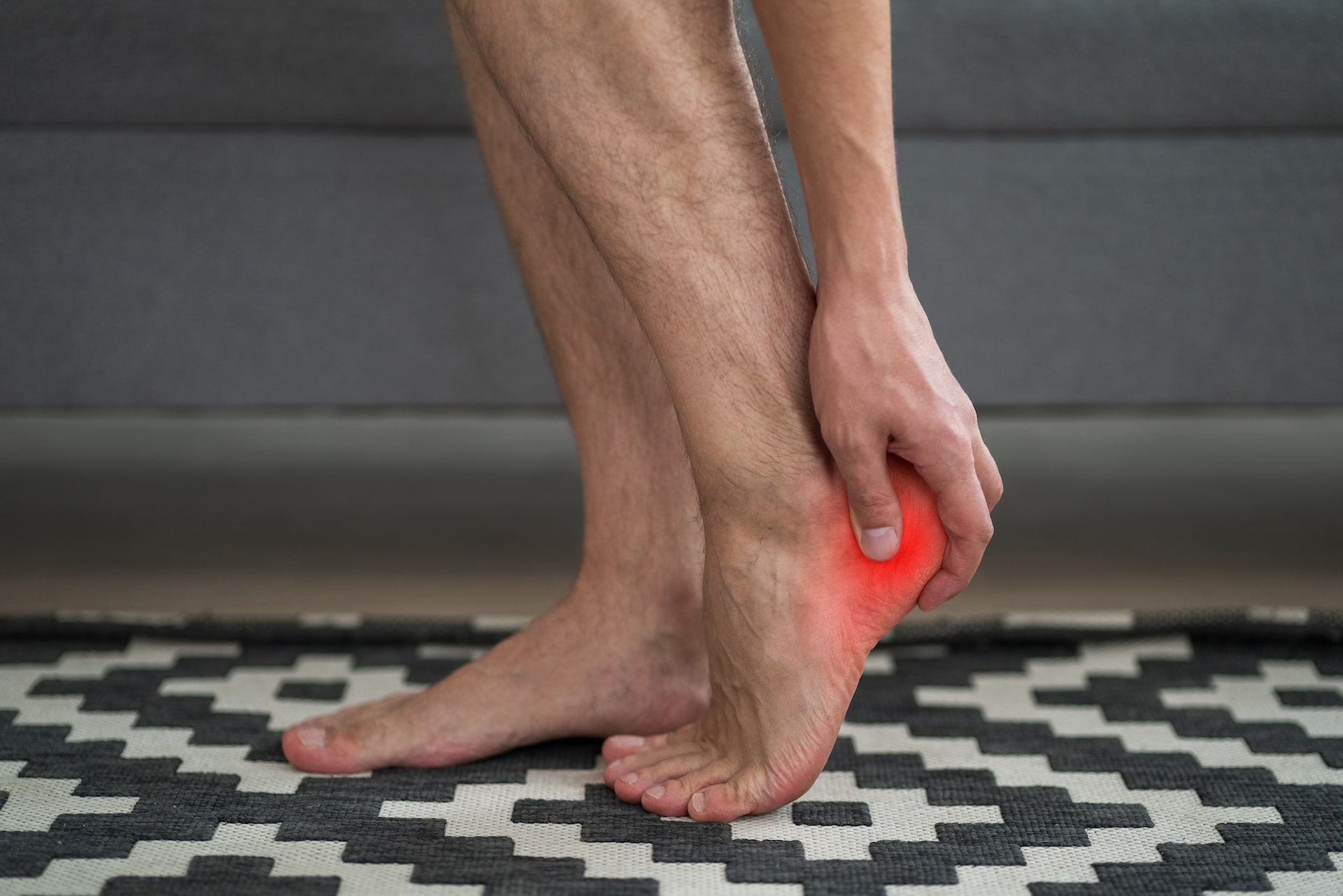
Treatment Tips for Dry Heels
If your heels have become cracked and painful, try these tips:
-
Slather your feet in moisturizing lotion then cover with socks before you go to bed. This gives the lotion eight or so hours to soak in. Our doctors recommend urea cream. Urea cream can be purchased at Kansas City Foot Specialists and you don’t need an appointment to stop by and pick it up.
-
Keep rough, callused skin smoothed with an emery board or pumice stone on a regular basis.
-
Avoid hot baths and showers as heat draws moisture out of your skin.
-
Drink lots of water to stay hydrated. This gives your body a chance to help itself from the inside out.
Cracked Heels Can Cause Infection
At KC Foot Specialists, we see some pretty severe cases of cracked heels. Not only can they be unsightly, but they can also be a health hazard. Dry, cracked skin is an invitation for infection. Add to that the fact that feet are exposed to a lot of germs and dirt just because we walk on them every day or keep them cooped up in sweaty shoes, and trouble can soon follow this condition.
Causes of Cracked Heels
Here are the three most common causes of cracked heels:
Dry Skin
If you live in a cold climate, or frequently take hot baths or showers, you may develop cracked heels due to persistent dry skin. When your heel pad needs to expand outward, but your skin is too tight and dry, the skin will crack, and result in soreness, bleeding, the development of fissures, or all three symptoms. The presence of fissures can increase your risk for infection since bacteria and viruses can now enter your body through the cracks in your feet.
Obesity
Obesity can increase your risk for cracked heels because the excess weight being placed on the heel pad will cause the heel pad to expand. Dry skin is often unable to support the expansion of your heel pad and eventually cracks.
Diabetes
Individuals with type 2 diabetes are at higher risk for cracked heels since uncontrollable blood sugar levels can lead to nerve damage in the feet – a condition known as peripheral neuropathy. Nerve damage in the feet can increase the risk for dry skin since blood flow is affected. Those with type 2 diabetes are often more than twice as likely to develop infections from cracked heels than those without diabetes. If you suffer from type 2 diabetes, visit your podiatrist regularly to have your feet examined for signs of cracking and ulcers, and to have your toenails safely clipped to lower your risk for infection. Practicing good diabetic foot care can lower your risk for complications down the road.
Cracked Heels Can Lead to Fissures
Cracked heels occur when the skin on the bottom of your feet and heels becomes dry enough to split open, resulting in deep, painful cracks known as fissures. Fissures can make walking feel painful and can increase the risk for major infection if left untreated. While cracked heels can occur simply as a result of having dry skin, there are other risk factors that can increase your risk for cracked heels, such as diabetes and obesity.
Do you suffer from dry or cracked heels? Call Kansas City Foot Specialists to schedule an evaluation at (913) 338-4440, or request an appointment online so we can determine the true cause of your injury and get you back on your feet.



